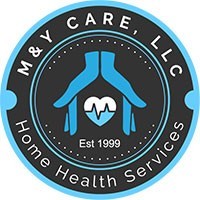Hospital readmission rates are one of the most important markers of success in the post-acute and long-term care spaces. But a large number of home care agencies still don’t keep track of those metrics.
Overall, 75% of home care agencies did not track readmission rates at all in 2019, according to recently released data from Idaho-based market research and education firm Home Care Pulse.
Historically, home care has largely been focused on activities of daily living (ADLs) and social determinants of health — things that sometimes fall slightly outside of the medical lens. With that in mind, it’s not entirely surprising that one-quarter of home care agencies haven’t been tracking their clients’ readmission rates.
Increasingly, though, home care agencies are taking care of clinically complex, chronically ill individuals, people who are constantly in and out of hospital settings. Additionally, agencies are starting to develop relationships with Medicare Advantage (MA) plans and accountable care organizations (ACOs), both of which seek to curb health care spending and keep their members in the lowest-cost settings possible.
Today, if a home care agency wants to be competitive in the MA landscape or win partnerships with ACOs, it likely needs to have advanced data capabilities, Home Care Pulse CEO Erik Madsen told Home Health Care News.
But it’s not always that simple, he noted.
“It’s one of the challenges,” Madsen said. “The industry is very much relationship-based. And that also brings some downside in my opinion, because companies are slow to embrace technology, they’re slow to embrace data, they’re slow to embrace some of these other areas that other [adjacent] industries have taken more seriously.”
Without a doubt, direct relationships between home care agencies and their clients will continue to be important. But without embracing data, even agencies with the most quality relationships could fall behind.
Improved operational procedures could bring agencies to the next level, but they’re not always on the top of their priority lists.

“[Home care agencies] are slower to adopt those operational processes and procedures that they’re going to have to if they want to compete in the next decade,” Madsen said. “It’s just a fact.”
Part of the problem is that a vast majority of home care agencies operate on a smaller scale, with razor-thin margins and relatively small administrative teams.
In these situations, many agencies looking to invest in their data capabilities don’t know where to start. But that way of thinking needs to change, Family Resource Home Care CEO Jeff Wiberg said during HHCN’s Medicare Advantage Summit in June.
amily Resource Home Care is a large, independent home care operator out of the Pacific Northwest. The agency recently invested in new software to collect all sorts of data, partly to prepare itself for more MA business in the future.
“I think we’d really be putting our head in the sand if we don’t start gathering details and information that will help position us as an industry to really demonstrate our value,” Wiberg said. “[That 25% number] — that’s a big wake up call to say, as an industry, we need to be collecting more of this data.”
As one of the home care agencies to embrace data, Family Resource Home Care tracks a whole lot more than just readmission rates, too. It’s other focus areas include tracking emergency room utilization and fall rates for its clients.
Family Resource Home Care additionally keeps tabs on its census and how many clients are living with multiple co-morbidities, among other information. It also separates hospital readmission rates into different categories, including hospitalization rate prior to home care admission.
“Getting away from that pen and paper [system] is going to be key,” Wiberg said.
‘Winning a seat at the table’
Even for the agencies that are collecting hospital readmission data, nearly 40% are using Excel spreadsheets or another less-than-scientific way to track numbers, according to Home Care Pulse.
“The average agency, they’ve just got a couple of people working, between answering the phone and trying to recruit, retain, train and do check-ins,” Madsen said. “Margins are small enough that they don’t have an overabundance of staff. So they’ve got to identify what are those two or three key [data] points that they want to track are and then really dial in on those.”
In 2019, the typical home care agency collected anywhere from $800,000 to $2.8 million, on average. The majority of them have been in operation for over seven years, usually relying on just one location for business.
Omaha, Nebraska-based Right at Home is another home care organization that has invested in data capabilities and tracking client readmission rates. As a franchise system, Right at Home has nearly 500 U.S. locations.
Right at Home had been working to develop its data strategy even before new MA opportunities started to appear. The steps the U.S. Centers for Medicare & Medicaid Services (CMS) has taken to open up MA to home care only accelerated those efforts.
“Let’s make sure that we’re on a path to cleaning up our data and trying to get better access to our data as a system,” Right at Home CEO Brian Petranick said at the HHCN MA Summit. “[The MA tailwinds] gave us some fuel for our message. Now we have [even more reason] … to collect data.”

Among its efforts, Right At Home tracks patients’ changes in condition and takes a special interest in a wide array of social determinants of health.
Cincinnati-based FirstLight Home Care has likewise invested heavily in its data capabilities, according to CEO and founder Jeff Bevis.
“We went ahead and pursued an actual [electronic medical record] and have that component in our software platform now.” Bevis said during the MA Summit. “If home care companies are able to really track that data and go away from pen and paper … that’s going to make all the difference too.”
The top home care providers in the country are becoming more and more intricate with their data collection.
The smaller agencies, with a few simple steps, can kickstart a better system for themselves and paint a brighter picture for home care overall along the way.
“The next decade in home care is going to be just phenomenal as we start to become more mature as an industry [through these processes] and get more opportunity to have a seat at the table,” Madsen said.
By Andrew Donlan | July 13, 2020
Source: Home Health Care News

